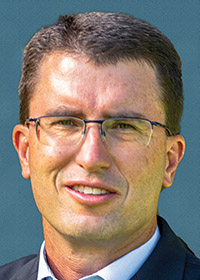What’s your incentive?
by September 25, 2022 9:43 am 461 views

Is it just me, or are coffee shops always cold?
For several reasons, I spend a lot of time in coffee shops, none of which are because I like coffee (I don’t). Yet, they are convenient places to meet clients and to get work done. The problem is that it seems they’re always cold.
It’s long been held that restaurants keep the temperature low to turn tables faster. If there is a parallel for coffee shops, it can’t be about turning tables. They want us there, right? I hypothesize that with low room temps, they’ll prompt us to purchase more hot water dripped through ground-up beans. Perhaps they are incentivizing the behavior they want more of? That’s not a knock. One could argue it’s good business.
One of my clients recently shared how they were restructuring components of their compensation structure because a part of their incentive pay “wasn’t working anymore.” It was a good problem to have because what was once incentivized monetarily had become such a standard that the incentive had effectively lost its meaning. So, that was absorbed in the base, and a new variable pay component is being introduced.
That isn’t an isolated example. In 2022 alone, I’ve had several such conversations on compensation structure. Some are the natural upward pressure of inflation and a tight labor market. Others have to do with non-cash benefits and the creative ways employers provide relevant and meaningful employment terms. Like the earlier example, a couple are targeted efforts to engineer a comp structure that rewards individual and company performance.
I want to be clear: I am not a compensation expert. Fortunately, I know a few I rely on when clients’ needs emerge. But where I find myself in these conversations is in the strategic and critical thinking that’s essential for anyone assessing its place in the market and what the business model can afford. Here are a few fundamentals:

Does your compensation structure incentivize the behavior you want? Too often, employers haven’t thought about what they want and whether structures promote that. W. Edwards Deming famously said, “Every organization is perfectly designed to achieve the results it gets.” That includes your comp plan. Some want collaborative work and shared results. Others want to spur a measure of internal competition. The same comp plan won’t work for both. One step more: Watch for shadow behavior you don’t want. That team structure could reward someone in the boat not rowing. The competition you want could degrade into unhealthy rivalry.
Benefits don’t benefit everyone the same. I didn’t make that up, but I wish I did. A material component of total comp is the cost to the employer to provide certain benefits. Still, I can promise you that your people have a wide range of real value they derive from the benefits you offer. I don’t know that a company can fix that, but it can give critical thought to the relevance of what it offers to its people. The result is a growing trend toward a “cafeteria” approach that puts more choice in peoples’ hands.
Are you listening? Risk for any company is becoming tone deaf due to being too insular. The truth is that there are market dynamics at play, and while you don’t have to follow suit, you are always competing. And there are things you can do to set yourself apart. With great interest, I recently read NOARK’s 2022 Compensation and Benefits Survey results. It’s one example of a solid regional resource that can help you listen.
A final thought: A few years ago, I was in a board meeting where I was fairly new, and I asked a question to which the reply was, “we’ve never done it that way.” I politely pointed out that while that may be an accurate statement, it’s rarely a good answer to a question. The same is true for any of our existing systems and our willingness to continually evaluate whether they are (still) working for us in the way we need them to.
Chuck Hyde is the founder of C3 Advisors, a firm focused on executive development and talent optimization. He can be reached at www.c3adv.com. The opinions expressed are those of the author.
